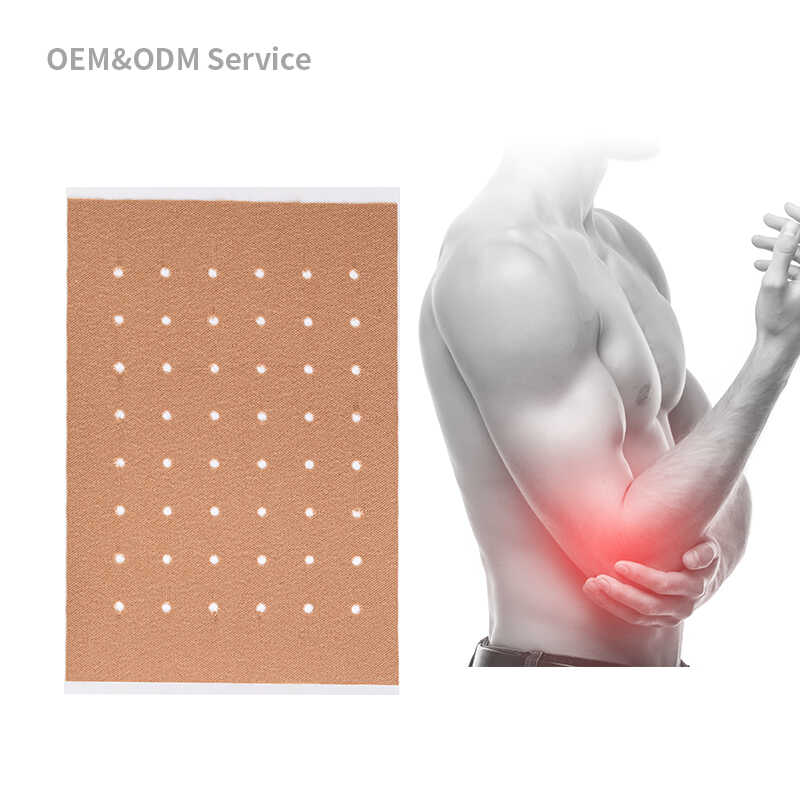How Can I Start Offering Custom Healthcare Pain Relief Patches?
Custom healthcare pain relief patches are increasingly popular in the health and wellness market due to their convenience and effectiveness. If you’re considering entering this market, partnering with a reliable Healthcare Pain Relief Patches Manufacturer, Healthcare Pain Relief Patches OEM, or Healthcare Pain Relief Patches Supplier can help you bring your products to market efficiently. This article will guide you through the process of offering Custom Healthcare Pain Relief Patches, from planning to launch.

1. Understand the Market Demand
Before offering custom pain relief patches, conduct thorough market research. Assess the following:
- Target audience: Who are your customers? Athletes, seniors, or those with chronic pain?
- Competitor analysis: What are other brands offering? How can you differentiate?
- Trends: Are there demands for organic ingredients, long-lasting patches, or innovative designs?
Understanding these factors ensures that your Private Label Healthcare Pain Relief Patches align with consumer needs.
2. Choose a Reliable Healthcare Pain Relief Patches Manufacturer
Selecting the right Healthcare Pain Relief Patches Manufacturer or OEM partner is critical to your success. Look for manufacturers who offer:
- Customization capabilities: Can they create unique formulas or packaging tailored to your brand?
- Compliance with regulations: Ensure they follow FDA, GMP, and other relevant industry standards.
- High production capacity: Can they scale up production as demand grows?
- Quality control systems: Verify that they perform stringent quality checks.
Research reviews and request samples to assess the manufacturer's capabilities before committing.
3. Develop Your Custom Formula
Work with your Healthcare Pain Relief Patches OEM to create a product formula that meets market demands. Key factors include:
- Active ingredients: Choose proven ingredients such as menthol, capsaicin, or herbal extracts.
- Adhesive properties: Ensure the patch adheres well but removes easily without irritation.
- Special features: Consider innovations like waterproof patches or extended-release formulas.
Collaborating with an experienced Healthcare Pain Relief Patches Supplier ensures you achieve the desired product performance.
4. Customize Packaging
Your product’s packaging is critical for branding and consumer appeal. A Private Label Healthcare Pain Relief Patches solution allows you to:
- Design unique branding: Incorporate logos, colors, and messaging.
- Provide detailed labeling: Include instructions, benefits, and compliance certifications.
- Ensure sustainability: Opt for eco-friendly packaging to attract environmentally conscious consumers.
Most Healthcare Pain Relief Patches OEM partners offer comprehensive packaging customization services.
5. Test Your Product
Before launching, test your custom healthcare pain relief patches to ensure they meet quality and efficacy standards.
- Clinical testing: Conduct trials to confirm safety and effectiveness.
- Focus groups: Gather feedback from potential customers.
- Iterate: Adjust the formula or design based on testing results.
Collaborate with your Healthcare Pain Relief Patches Manufacturer to refine the product if necessary.
6. Establish Distribution Channels
To reach your audience, decide on your distribution strategy. Options include:
- Online sales: Launch an e-commerce store or partner with marketplaces like Amazon.
- Retail partnerships: Distribute through pharmacies, wellness centers, or fitness outlets.
- Direct-to-consumer: Use social media marketing to target customers directly.
Your Healthcare Pain Relief Patches Supplier may also assist with logistics and distribution solutions.
7. Market Your Product
Successful marketing is essential for your custom healthcare pain relief patches to stand out. Utilize:
- SEO and content marketing: Write articles, blogs, and FAQs using keywords like "Custom Healthcare Pain Relief Patches" to boost visibility.
- Social media advertising: Showcase benefits through videos, testimonials, and influencer partnerships.
- Customer education: Highlight how your patches provide effective, convenient pain relief.
An engaging marketing campaign builds trust and drives sales.
8. Monitor and Optimize
Once your product is on the market, track performance metrics:
- Sales trends: Identify which products and regions are performing best.
- Customer feedback: Collect reviews and address concerns to improve satisfaction.
- Product innovations: Stay updated with new ingredients or technologies to keep your brand competitive.
Partnering with a flexible Healthcare Pain Relief Patches Manufacturer ensures you can adapt to market demands.
Related Questions and Answers
Q1: What is a Healthcare Pain Relief Patches OEM, and how can it help my business?
An OEM (Original Equipment Manufacturer) produces products customized to your brand specifications, helping you create unique, private-label patches efficiently.
Q2: How do I find a reliable Healthcare Pain Relief Patches Supplier?
Look for suppliers with strong reviews, proven quality control processes, and experience in the healthcare industry. Request samples and visit their facilities if possible.
Q3: What are the benefits of offering Private Label Healthcare Pain Relief Patches?
Private labeling allows you to build brand recognition, customize formulations, and target specific customer needs while outsourcing manufacturing.
Q4: Can I customize ingredients in my healthcare pain relief patches?
Yes, most Healthcare Pain Relief Patches Manufacturers and OEM partners offer ingredient customization to suit your brand’s requirements and market trends.
Q5: What regulations should my product comply with?
Ensure compliance with FDA guidelines, Good Manufacturing Practices (GMP), and any local regulations for healthcare products.
By following these steps and collaborating with an experienced Healthcare Pain Relief Patches Manufacturer, you can successfully launch custom pain relief patches that meet market demands and establish your brand in the competitive healthcare sector.






